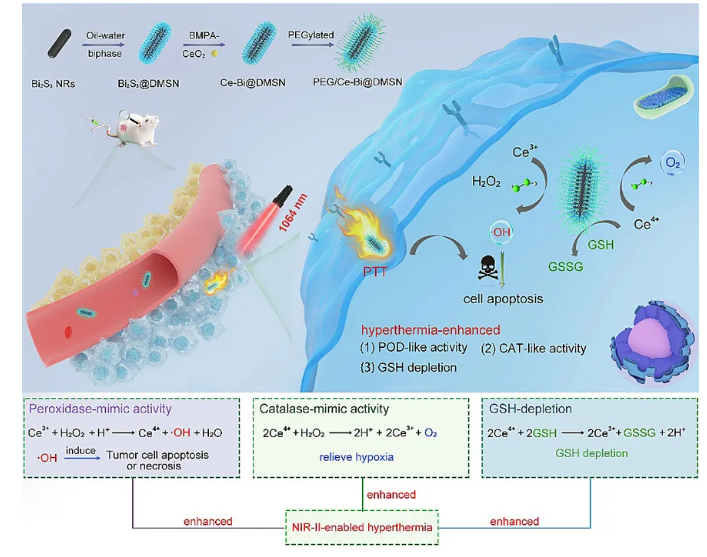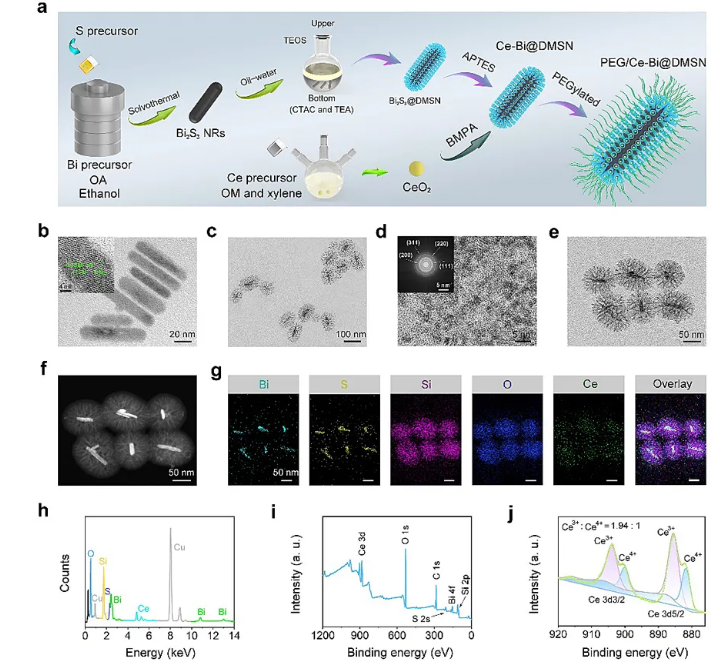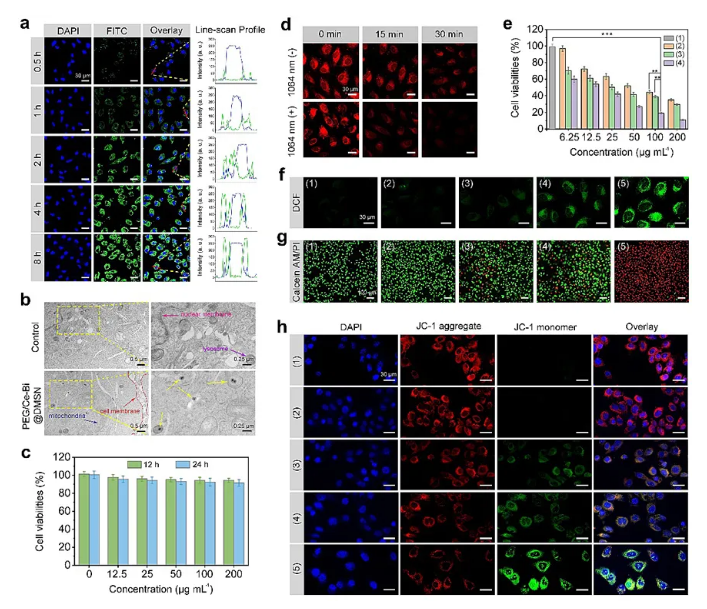
hotline:
17715390137
Tel/Wechat:
18101240246 (Technology)
0512-68565571
Email:mxenes@163.com (Sales Engineer)bkxc.bonnie@gmail.com
Scan the code to follow or search the official account on WeChat:
2D Materials Fronrier After paying attention,
click on the lower right corner to contact us,
Enter enterprise WeChat.
Professional Services Online

 Enzyme is an indispensable substance for the normal functioning of human body, and it has important application value in the treatment of various diseases. However, the high production cost of natural enzymes and the difficulty of storage have greatly restricted its further application in the medical field. Nanocatalytic therapy based on nanoscale artificial enzyme mimics (nanoenzymes) is an emerging technology that can be used to treat various malignant tumors. However, nanozymes still have the problem of relatively insufficient catalytic activity in the tumor microenvironment. In order to solve this problem, the team of Professor Yang Piaoping of Harbin Engineering University and the team of researcher Lin Jun from the Changchun Institute of Applied Chemistry of the Chinese Academy of Sciences developed a bacterial-like cerium-based nanozyme (PEG/Ce-Bi@DMSN), which has a partial The photothermal regulation of dual enzymes mimics the catalytic activity (peroxidase-like and catalase-like activity) and glutathione depletion capacity, which can produce reactive oxygen species in tumor tissues to achieve efficient tumor treatment.
Enzyme is an indispensable substance for the normal functioning of human body, and it has important application value in the treatment of various diseases. However, the high production cost of natural enzymes and the difficulty of storage have greatly restricted its further application in the medical field. Nanocatalytic therapy based on nanoscale artificial enzyme mimics (nanoenzymes) is an emerging technology that can be used to treat various malignant tumors. However, nanozymes still have the problem of relatively insufficient catalytic activity in the tumor microenvironment. In order to solve this problem, the team of Professor Yang Piaoping of Harbin Engineering University and the team of researcher Lin Jun from the Changchun Institute of Applied Chemistry of the Chinese Academy of Sciences developed a bacterial-like cerium-based nanozyme (PEG/Ce-Bi@DMSN), which has a partial The photothermal regulation of dual enzymes mimics the catalytic activity (peroxidase-like and catalase-like activity) and glutathione depletion capacity, which can produce reactive oxygen species in tumor tissues to achieve efficient tumor treatment.
This material system uses bismuth sulfide nanorods and cetyltrimethylammonium chloride (CTAC) as hard and soft templates to synthesize a bacterial nanoplatform with adjustable thickness and large pore size in an oil-water two-phase system. Then load the ultra-small CeO2 nanozyme synthesized by the improved reverse micelle method (higher Ce3+/Ce4+ ratio: 1.94/1). At the same time, due to the presence of bismuth sulfide nanorods, the nanoenzyme exhibits a good photothermal conversion efficiency (36.2%) under 1064 nm laser irradiation, and can realize the function of regulating enzyme activity in response to photothermal. The nanoenzyme exhibits dual enzyme mimic catalytic activity (peroxidase-like and catalase-like) under slightly acidic conditions, which can effectively regulate the tumor microenvironment, that is, simultaneously increase oxidative stress and relieve hypoxia caused The resistance of tumor cells to reactive oxygen species. In addition, the nanozyme can effectively consume glutathione (GSH) overexpressed in tumor cells through redox reactions. It is worth noting that the two enzyme activities of the nanozyme and the depletion capacity of GSH have been well improved under the local light and heat environment. It provides preconditions for specific treatment in response to tumor microenvironmental stimuli.
Article source: X-MOL News



This information is sourced from the Internet for academic exchange only. If there is any infringement, please contact us to delete it immediately.

| Reminder: Beijing Beike New Material Technology Co., Ltd. supplies products only for scientific research, not for humans |
| All rights reserved © 2019 beijing beike new material Technology Co., Ltd 京ICP备16054715-2号 |